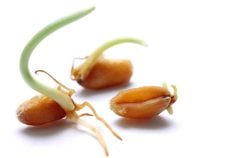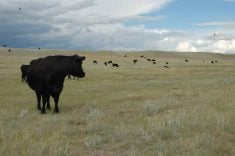While the future of glaciers and their effect on prairie water supply is uncertain, the effect of prairie droughts is clear.
John Pomeroy, director of the Centre for Hydrology and Canada research chair in water resources and climate change at the University of Saskatchewan in Saskatoon, said western Canadian droughts vary. Sometimes the mountains receive good moisture when much of the prairies are dry.
In 2003 it was dry both on the Prairies and in the mountains.
Pomeroy said river flows vary each year, but have changed little since 1912.
Read Also

Manitoba community projects get support from HyLife
HyLife Fun Days 2025 donated $35,000 each to recreation and housing projects in Killarney, Steinach and Neepawa earlier this fall.
While glaciers were shrinking before greenhouse gas emissions and other human-induced changes were introduced, the snow pack and snowfall in the Rockies have experienced little change since the 1930s.
Changes in river flow are most pronounced during droughts and are also a result of heavy irrigation and municipal uses in southern Alberta.
“For a farmer downstream in Saskatchewan and eastern Alberta, the changes are undetectable,” he said.
Changes in climate have also gone largely unnoticed. Weather records indicate the Prairies became “slightly warmer and slightly wetter” during the 20th century, said Pomeroy.
But the change is much less than that observed in other places, such as Bolivia and western Africa where it is now 50 percent drier.
Pomeroy’s research in the Bolivian Andes shows shrinking glaciers are now contributing significant amounts of water to rivers in that country.
“These are places where it is a disaster,” he said.
While the Canadian Prairies could get wetter and three to five degrees warmer in the coming decades due to global warming, it is unknown whether the precipitation will come in the form of snow or rain.
In the right conditions the heat and moisture could enhance the growing season and lead to higher evaporation rates, improved transpiration through the plants and much better plant growth, Pomeroy said.
On the other hand, too much moisture in the fall would make current agricultural practices impossible.
The Foundation for Climate and Atmospheric Sciences recently received funding to study the 1999-2004 prairie drought, and examine what caused it, how extensive it was, what sustained it and what broke it.
Other research, which began this past winter and is expected to continue for decades, will take readings from eight meteorological stations in the Rockies to measure snowfall, snow melt, rainfall, evaporation and stream flows.
“We want to improve our predictions of stream flows coming from the Rockies in drought and in other conditions,” Pomeroy said.
While it is important to know more about river flows, conservation will be central to sustaining water supplies for the growing needs of prairie communities and agriculture, said Masaki Hayashi of the University of Calgary’s department of geology and geophysics.
He stressed the need to find ways to use water more efficiently for irrigation, municipal and industrial purposes.
“We don’t really have to use up all the resources available; we can always leave some,” he said.
“If we can do with less, that’s better.”














